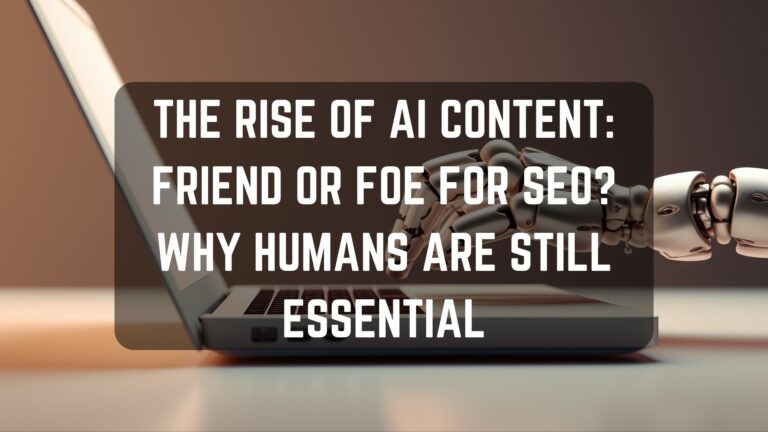FOLLOW US ON:
Your Google Traffic Tanked. Overnight. Now what?
If you logged into Google Search Console and saw red arrows pointing down, you’re not alone. The March 2025 Core Update just wrapped up, and it hit harder than anyone expected. Sites that were thriving yesterday are gasping for traffic today. It feels personal, but it isn’t. Google didn’t target you — it targeted outdated SEO tactics.
But here’s the truth: your rankings aren’t dead. They’re just waiting for a comeback. Let’s break down what really happened and how to bounce back stronger (and smarter).
What Actually Happened?
Google rolls out core updates regularly to improve the relevance and quality of search results. The March 2025 Core Update, completed on March 27, aimed to prioritize genuinely helpful content and reduce low-value noise.
If your site relies on keyword stuffing, outdated content, or AI-generated fluff — it likely took a hit. Why?
- Content didn’t align with updated search intent
- Lack of real experience or authority (E-E-A-T)
- Thin, duplicate, or low-engagement pages
- Weak internal linking or poor site structure
In short: Google’s getting better at understanding quality. Your site needs to get better at delivering it.
Signs You Were Hit by the Update
Want to confirm if the algorithm update knocked you down? Look for:
- ↓ Sudden drops in impressions and clicks in Google Search Console
- ↓ Decline in rankings for previously top-performing pages
- ↓ Lost featured snippets or top 3 positions
- ↓ Increased bounce rate or lower dwell time
If these sound familiar, it’s time to take action.
What Not to Do (Seriously)
Most people panic and make things worse. Here’s what not to do:
- Don’t delete all your underperforming posts without a plan
- Don’t keyword-stuff or over-optimize out of desperation
- Don’t buy shady backlinks
- Don’t rely solely on AI content with zero human oversight
Updates aren’t punishments — they’re signals. So let’s decode them and recover smart.
How to Bounce Back from a Google Core Update
🔍 1. Audit Your Content (Brutally)
Start with your top 10 pages that lost traffic. Ask:
- Is this content current, useful, and unique?
- Does it have clear structure, media, and internal links?
- Are you offering something better than what’s currently ranking?
Pro tip: Don’t just update dates. Update ideas, add stats, include new examples.
🧠 2. Improve E-E-A-T (Experience, Expertise, Authoritativeness, Trust)
Google favors real people with real expertise. Build trust with:
- Author bios showing relevant credentials or hands-on experience
- Citing trustworthy sources (think .gov, .edu, respected publishers)
- Adding personal examples, case studies, or original research
Want a reference on making technical content more helpful? Check out:
The Top 11 Questions About Prompt Engineering — Answered
🌟 3. Align with Real Search Intent
If your blog answers a question no one’s asking — it’s invisible.
Recheck:
- What are people searching?
- Are your headlines matching their intent?
- Are you giving quick, helpful answers for scanners and depth for readers?
Take cues from:
Top 5 Best Ergonomic Desk Accessories to Elevate Your Workspace
📊 4. Optimize for AI-Powered Search (SGE)
Search is changing. Google’s Search Generative Experience (SGE) now pulls answers straight from your content. To show up:
- Use FAQ sections and short, answer-style paragraphs
- Structure content with headers, bullets, and summaries
- Mark up pages with schema (FAQ, How-To, Article, etc.)
You’re not just writing for humans anymore — you’re writing for AI summaries, too.
🔗 5. Strengthen Internal Linking
Google loves a well-connected site. Internally link:
- From high-traffic pages to those that need love
- Between related posts to show topical depth
- Using natural, descriptive anchor text
Examples:
5 Simple Tips for Getting Fit (for Beginners)
The Ultimate DIY Face Masks for Every Skin Type
How Long Does Recovery Take?
Most recoveries happen in 30 to 90 days — if you’re making real improvements. Google re-evaluates content constantly, especially after updates.
Stay consistent. Keep refining. Don’t chase shortcuts.
Final Word: Google Didn’t Kill Your Rankings. It Raised the Bar.
Yeah, it hurts. But it’s also a wake-up call.
This update didn’t destroy your site. It exposed the gaps. Now you have a choice: evolve or stay buried.
Focus on helpful, high-value content. Think user-first. Structure it well. Back it with real insights. That’s how you earn your rankings — and keep them.







